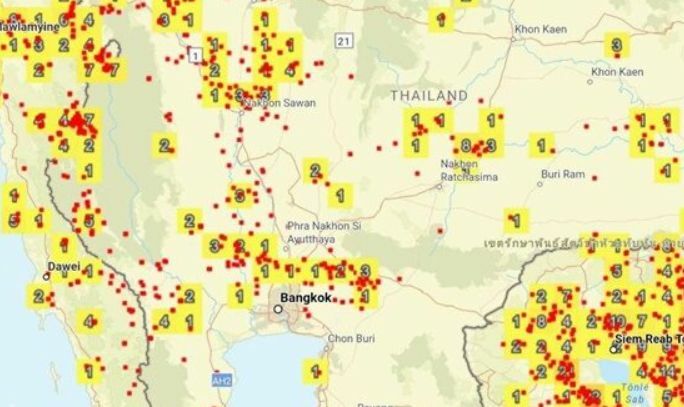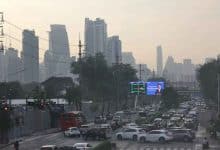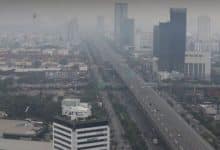Bangkok enveloped in smog as PM2.5 levels hit new highs

Bangkok citizens awoke yesterday to a pervasive burning smell as PM2.5 pollution levels soared across the city. Officials have identified three primary causes for the incident, which left many areas shrouded in a smoky haze and sparked widespread concern among residents.
The unexpected spike in air pollution was primarily attributed to a shift in wind direction yesterday, March 20, as winds from the east replaced the usual breezes from the Gulf of Thailand. This change contributed to the accumulation of pollutants, particularly in the vicinity of the capital. Additionally, multiple fire incidents in the surrounding provinces during the past 24 hours were noted, further exacerbating the air quality.
The current weather variability, including the occurrence of summer storms and the recent passage of a high-pressure system from the northeast, has also played a significant role. These meteorological conditions have caused the mixing height—the layer of the atmosphere where air and pollutants can disperse—to decrease, leading to greater concentrations of particulate matter. With increased humidity, secondary PM2.5, particles formed from nitrogen compounds and ammonia, are more likely to occur, particularly under moist conditions, reported KhaoSod.
In light of these developments, the advisor on sustainability to the Bangkok Metropolitan Administration, Phonprom NorSor Wikitset, provided insights into the smoke and smell that plagued the city. The page Friends of Chatichai posted a statement on social media, which explained the reasons behind the smoggy conditions.
In related news, Bangkok and 11 other provinces in Thailand are currently grappling with hazardous air quality levels, exacerbated by PM2.5 particulate matter exceeding standard thresholds.
The Geo-Informatics and Space Technology Development Agency (GISTDA), under the Ministry of Higher Education, Science, Research and Innovation, alongside the National Research Council of Thailand, the Pollution Control Department, Kasetsart University, and Chiang Mai University, are monitoring the situation on an hourly basis through satellite data available on the Air4Thai application.
Latest Thailand News
Follow The Thaiger on Google News:


























